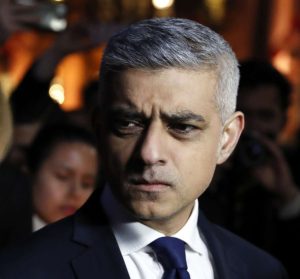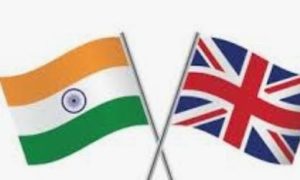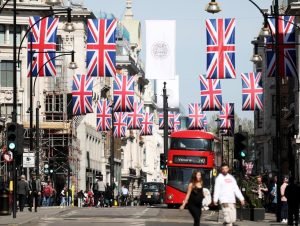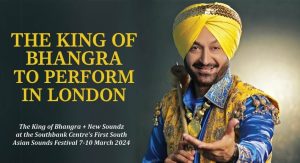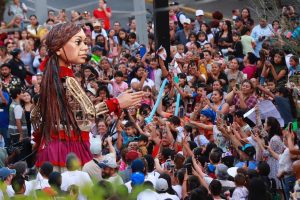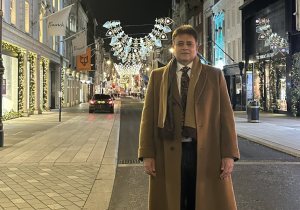Tagore became a sensation all over Europe and his work was translated in all the major European languages and was a complete sell out with reprints. Tagore’s popularity has outgrown even today in Europe particularly in Germany and Sweden where Tagore is almost a household name …. Writes Dilip Roy
Rabindranath Tagore (1861-1941) in many ways was the embodiment and manifestation of India’s greatest classical poet KALIDASA (First Century BCE) Tagore’s stature as 20th Century’s most esteemed and revered poet of the world remains unrivalled to date.

Tagore’s poetry Geetanjali (Song offerings) published in English in 1912 had made Tagore famous in Europe almost overnight. The book was reprinted ten times within a year; and in 1913 because of his profoundly sensitive and beautiful verse, he has made his poetic thought expressed in his own English words, a part of literature of the West, he was awarded a Nobel prize in literature and remains the only Indian to win this award so far. His admirers included intellectuals and fellow Nobel laureates such as Bertolt Brecht, Albert Einstein, Andre Gide, Herman Hesse, Thomas Mann, Pablo Neruda, Boris Pasternak, Romain Rolland, G.B. Shaw, W.B. Yeats and Ludwig Wittgenstein of Vienna Circle ( who translated Tagore’s famous play “King of the Dark Camber.”)
However, it was with Einstein that Tagore forged an intellectual friendship and their discussions on music, philosophy and science has been published in many literary books and journals of the West. Tagore became a sensation all over Europe and his work was translated in all the major European languages and was a complete sell out with reprints. Tagore’s popularity has outgrown even today in Europe particularly in Germany and Sweden where Tagore is almost a household name. Some of the streets are also named after him.
Among the Nobel laureates at least six names come to mind who were Wagner admirers they are Herman Hesse, Thomas Mann, Boris Pasternak, G B Shaw, W B Yeats and Ludwig Wittgenstein. Incidentally it was Yeats who was a great admirer of Tagore also wrote 16 page introduction to Geetanjali in September 1912 and he even quotes Wagner’s Tristan in the last page. Tagore in his early days developed a special interest for German language and was reading Goethe and Schiller in its original and at the same time went on to translate the poems of Heinrich Heine. Tagore was also reading the works of German Indologists such as Friedrich Max Muller, Dr. Julius Jolly a German scholar and Friedrich VON Schlegel.
Tagore became second only Indian to receive Hon Degree from Oxford (D lit) in 1940 the first was a distant relation Sir S M Tagore received Hon Degree in music (D Mus) in 1895.

Most significantly, Tagore’s poetry struck a chord with wide variety of European composers among them Franco Alfano, Phillip Glass, Leos Janacek, Nino Rota, Arnold Schoenberg, Wilhelm Stenhammar, Karol Szymnowski and Alexander Zemlinsky to name but a few. Alfano who completed Puccini’s libretto for Turandot set to music twenty six poems by Tagore eleven of them from Nobel prize winning Geetanjali and fifteen from The Gardner the songs were beautifully sung in Italian. Phillip Glass whose opera Satyagraha based on Gandhian philosophy, has Tagore as silent character. Janacek was attending a lecture given by Tagore in Prague (1921) he was so carried away that he set to music from the (Gardner)Nino Rota the composer of Italian films of Federico Fellini, set to music Tagore’s four poems from award winning Geetanjali in bel canto style and Szymanowski set to music four poems from the popular Gardner in German. However, the most outstanding work was done by two Wagnerian composers and conductors namely Stenhammar and Zemlinsky.
The Swedish composer Wilhelm Stenhammar (1871-1927) who describes himself as Wagnerian, belongs to the period of transition between the late romanticism and modernism better described as highly romantic. Stenhammar showed greater interest in the more progressive music of Liszt and Wagner. This is seen nowhere better than in Das Fest auf Solhaug (after Ibsen, Stuttgart 1899) was certainly the foremost Swedish concert pianist of his time, he devoted himself to composition and conducting. He was the conductor of Royal Opera in Stockholm from 1907 until 1922.
Tagore’s philosophical play Chitra based on the legends of Indian epic Mahabharata was written in the year he received the Nobel prize in 1913 and in Nobel’s home country of Sweden there was a real Tagore boom most of his works were rendered into Swedish almost as soon as they appeared, and several of his plays could be seen in Swedish theatres. Tagore became the leading representative of the Indian romantically inclined tradition. Tagore’s play Chitra was produced at the Lorensberg Theatre in Gothenberg in 1920. Stenhammar had been a conductor and director of Gothengerg Symphony Orchestra and was commissioned to write incidental music for the performance for the Tagore’s play Chitra which was completed in 1921 which he dedicated to his wife Helga Stenhammar and had its premier on 29th March 1921.
Alexander VON Zemlinsky (1871-1942) the Austrian born Zemlinsky’s “Lyric Symphony” is regarded as his major work. Zemlinsky was first and foremost a composer of operas, and Schoenberg thought highly of him as such: “I dot not know one composer after Wagner who could satisfy the demands of the theatre with better musical substance than he. (Lyrische Symphonie)now famously known as “The Lyric Symphony” in seven songs after poems by Rabindranath Tagore for Orchestra, Soprano and Baritone was composed in 1922 and it was premiered in Prague on June 4th in 1924. In Zemlinsky’s own Krollwords – belongs to the tradition of the Song of the Earth. It shares with Mahler’s work not only it’s genre, that of the “song symphony”, but with an exotic choice of text. The poems of Tagore combine Indian traditions with elements of European poetry of the turn of the century – a syncretism that won him the Noble prize for literature in 1913. The inner affinity of the seven songs, with their preludes and interludes which all have one and the same profoundly serious passionate basis. It’s a kind of a love drama, from the first stirrings ground of the desire to the agony of farewell. His music is often Wagnerian, with recitatives punctuated by Lohengrin inspired orchestral interjections figures similar to those which adorn the melodic lines of Tannhauser, softly pulsating figures for solo timpani as in Wagner’s epic the Ring Cycle. Zemlinsky was also the music director of Prague opera (1911-27) and of the Kroll opera in Berlin from (1927-32). The most famous ground breaking recording of Lyric Symphony was done in Germany under the baton of the legendary conductor maestro Lorin Maazel for the Berlin Philharmonic in 1981 and sung in a Wagnerian style by famous German Baritone Dietrich Fischer- Dieskau and Soprano Julia Varady. (This is probably the greatest tribute paid to Richard Wagner from Zemlinsky a great Wagnerian himself.)

For Tagore, poetry and music were the essence of life which gave it rhythm, and his philosophy was one of living in harmony with the nature.
( Gandhi )
Tagore, the Goethe of India, gives expression to his personal experience that this is the truth ( life affirmation ) in a manner more profound, more powerful and more charming than any man has ever done before him. This completely noble and harmonious belongs not only to his people but to the entire humanity.
( Albert Schweitzer )
India’s only World renowned European classical music conductor Maestro Zubin Mehta was conferred the most prestigious Tagore Award on the eve of Tagore’s Noble centenary in 2013 for cultural harmony instituted by Govt. of India on the 150th anniversary of the poet.
The internationally celebrated film-maker Satyajit Ray who has interpreted many of Tagore works on to the screen sums up thus: Tagore remains the most original, prolific and influential artist India has produced “there is no equal not even in the West.”
Postscript: Just like Wagner, love has been main theme in Tagore’s poetic works as also his interest in Buddhist philosophy. Tagore like Wagner was a polymath. He was an artist, a poet of the first order, an essayist, a short story writer, a dramatist and a novelist also a composer of some two thousand songs but, most of all a philosopher. Tagore remains one of the greatest literary giants to date.
(Dilip Roy is an ardent Wagner enthusiast and also the author of a major article of 19th century Indian musicologist Sir S M Tagore (1840-1914) which was commissioned by the Royal College of Music London, for its Annual Review of 1996/97. Dilip is an Indo-German cultural enthusiast and like most Germans, he admires India’s classical cultural heritage. Dilip Roy’s articles on Richard Wagner has been published by various Wagner Societies)

